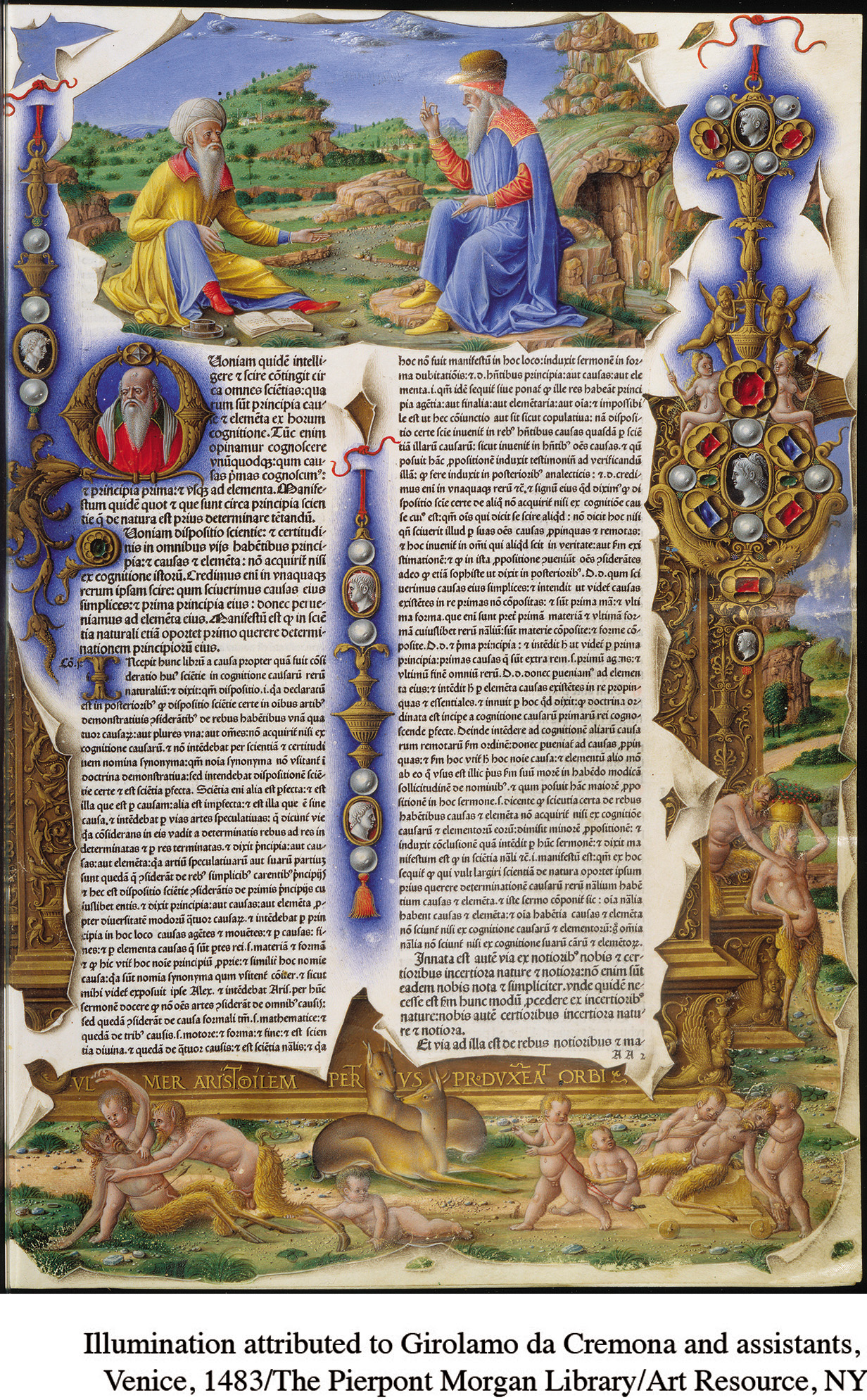Ways of the World with Sources
Printed Page 540
Source 12.3
Aristotle and Averroes
Beyond political and commercial relationships, Europeans had long engaged with the Islamic world intellectually as well. Source 12.3 illustrates that engagement in a work by Girolamo da Cremona, a fifteenth-
Aristotle, of course, was the great Greek philosopher of the fourth century B.C.E. whose writings presented a systematic and rational view of the world, while commenting on practically every branch of knowledge. The legacy of Greek thought in general and Aristotle in particular passed into both the Christian and Islamic worlds. Ibn Rushd (1126–

The painting in Source 12.3 is presented as a parchment leaf, torn to disclose two worlds behind Aristotle’s text. At the top in a rural setting, Aristotle, dressed in a blue robe, is speaking to Ibn Rushd, clad in a yellow robe with a round white turban. The bottom of the painting depicts the world of classical Greek mythology. The painted jewels, gems, and pearls testify to the great value placed on such illuminated and printed texts.
- What might the possession of such a book say about the social status, tastes, and outlook of its owner?
- What overall impression of Renaissance thinking about the classical world and the world of Islam does this painting convey?
- Notice the gestures of the two men at the top as well as the pen in Ibn Rushd’s hand and the book at his feet. How might you describe the relationship between them?
- What made it possible for at least some European Christians of the Renaissance era to embrace both the pagan Aristotle and the Islamic Ibn Rushd?